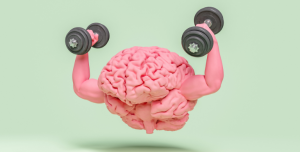Alzheimer’s can be kept at bay by physical exercise; exercise boosts protein levels known to strengthen communication between brain cells via synapses. Alzheimer’s is a brain disorder that slowly destroys memory, thinking skills, and the ability to carry out the simplest tasks. Abnormal build-up of proteins in and around brain cells may contribute to Alzheimer’s disease.
What causes Alzheimer’s?
The following factors contribute to Alzheimer’s disease:
- Age- This is the single most significant factor; the likelihood of developing Alzheimer’s disease doubles every five years after you reach 65.
- Family history – The genes inherited from your parents can increase the risk of contracting the disease.
- Down’s syndrome – People with Down’s syndrome are at a higher risk.
- Head injuries – People with severe head injuries may be at higher risk.
- Cardiovascular disease – Several lifestyle factors and conditions associated with cardiovascular disease can contribute to Alzheimer’s disease.
Alzheimer’s disease is the most common cause of dementia among older adults. The first symptom of Alzheimer’s is memory loss, including difficulty remembering recent events or conversations; memory gets worse, and other symptoms develop as the disease progresses.
What are the symptoms of Alzheimer’s?
- Repeating statements and questions over and over.
- Forgetting conversations, appointments, or events.
- Misplacing items, often putting them in places that don’t make sense.
- Getting lost in familiar places.
- Eventually forgetting the names of family members and everyday objects.
- Need help finding the right words for objects, expressing thoughts, or participating in conversations.
Exercise may help minimize the symptoms of Alzheimer’s; exercise has many known benefits for both physical and mental health, including reducing the risk of cardiovascular disease and diabetes, strengthening the bones and muscles, and reducing stress. Regular physical activity also benefits the brain.
Which exercises reduce the risk of Alzheimer’s?
- Walking
- Riding a bicycle or exercise bike
- Swimming
- Running
- Cardio machines like the elliptical
- Circuit training
Doing physical exercise several times a week is vital to reduce the risk of Alzheimer’s. Frequent exercises may:
- Allow you to keep thinking, reasoning, and learning skills sharp for healthy individuals.
- Help you improve memory, reasoning, judgment, and thinking skills (cognitive function) for people with mild Alzheimer’s disease or mild cognitive impairment.
- Delay the start of Alzheimer’s for people at risk of developing the disease or slow the progress of the disease.
- Increase the size of the part of the brain that’s associated with memory formation (hippocampus).
Brain exercise is just as important; an active and challenged is less likely to suffer from Alzheimer’s as thinking skills are less likely to decline. Adults over 60 must play games, build puzzles, and do other types of brain training that may help slow memory loss and other mental problems.
What kind of brain exercises are suitable for Alzheimer’s?
- Learning a new language or a musical instrument.
- Playing board games.
- Working on a crossword, number, or other kinds of puzzles.
- Playing online memory games or video games.
- Reading, writing, or signing up for local adult education classes.
When to see a doctor for Alzheimer’s?
Several conditions can result in memory loss or other Alzheimer’s symptoms; consult a doctor if you are concerned about your memory or other thinking skills.
Sources











